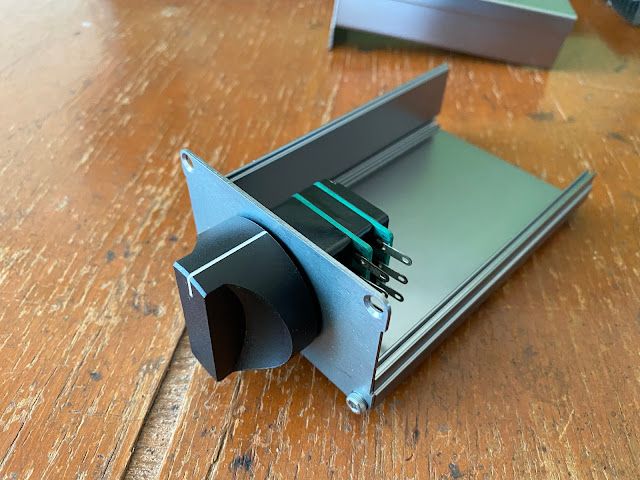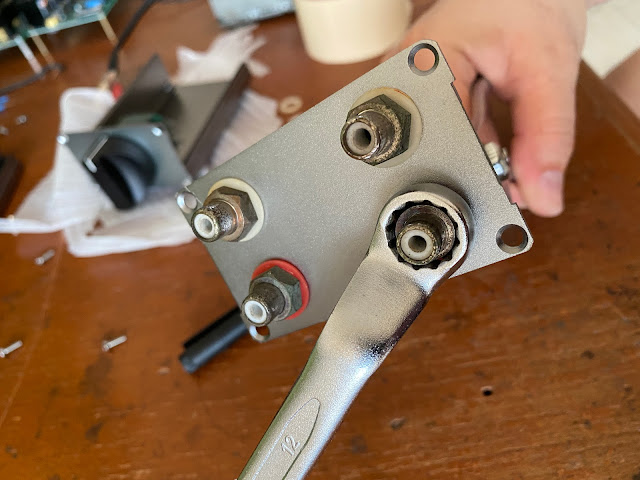A chain in one audio system is commonly consist of a source, pre-amplifier, power amplifier, and a pair of speakers.
Especially between the pre-amplifier and power amplifier, most owners demanding more simple setup like using only an integrated amplifier. This integrated amplifier is including variety of input selection and a volume control and a pre-amplifier circuit inside.
For the purest audiophile, the coloration from the pre-amplifier is avoided. That is why they prefer only using a power amplifier, minimizing extra components that can cause the coloration from it.
With this in mind, they are prefer to use a passive preamplifier to connect to the power amplifier.
So what is the passive pre-amplifier and what makes it different when using active preamplifier?
The passive pre-amplifier is only using a potentiometer to adjust the volume. Some others passive preamplifier is also using a input selector switch to choose from several input option. This passive pre-amplifier doesn't need any power supply, that what it call passive.
While in the active pre-amplifier, it has additional circuit that not only using the potentiometer as volume control, but using a transistor, op-amps or vacuum tubes that will increase the gain from the original signal.
Actually there are many good pre-amplifier that makes the sound quality better, but it is very expensive. Most mediocre pre-amplifier we can find around are mostly using low quality switches, potentiometer and complicated gain stages. This makes the audio signal degrade when passing those components.
We need a pre-amplifier to adjust the volume control because the power amplifier doesn't include this.
While when using passive pre-amplifier, the audio signal only pass through this potentiometer which very minimalist and make the audio signal is pure from the source direct to the power amplifier.
So when building this passive pre-amplifier, the main components are only potentiometer, RCA female sockets and cable. That's all.
The potentiometer in this build is TKD 2CP-2500, 100K ohm A-log stereo.
TKD potentiometer is Japan made and I got this in new-old-stock condition.
The RCA female sockets is used but high quality RCA from Cardas Audio. I only using 2 pairs of RCA sockets, one pair for input and the other for output. No switch here for the input selector.
The wiring for this passive pre-amplifier is simple. The input goes to pin 1 and the output is on pin 2 of the potentiometer. The pin C is for signal ground.
This apply for each channel on the potentiometer.
I using aluminum casing for this build.
The front panel is only for the potentiometer as volume control and the back panel is input and output RCA.
The wiring from the RCA sockets to the potentiometer is shown like the photo bellow same as my description above.
Each wiring is for signal input and output per channel, except the ground are tied together and goes to the casing ground.
That is all.
This passive pre-amplifier is so simple to build.
And the big question is how is the sound compare when using active pre-amplifier?
Well, since this build is considerably cheap, I hope you can build one for your self and compare it. I only spending around US$100 for all of those components and the most expensive part in this build is the TKD potentiometer.
The passive pre-amplifier like this will never fail me. And for others. It always sound way better compare when using active pre-amplifier.
The most noticeable difference is the liveness of the music, fuller presentation and more transparent vocals.
So I guess you don't need to think more. Order the components now and heat up the soldering iron.
Disclaimer: Any statement and photos in this article are not allowed to copy or publish without written permission from the writer. Any injury or loss from following tips in this article is not under writer responsibility.
















Hi Orronoco, interesting build you made here.
ReplyDeleteDidn't know that a single potentiometer is adequate enough to be used as a pre-amp.
May I know what brand do you use for the female RCA?
Thanks!
Hi, thank you for reading my blog.
DeleteThe RCA use here is Cardas silver coated. It is used and I had it since long time ago.